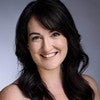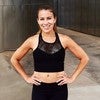Description
About This Video
Transcript
Read Full Transcript
So in our adult form, we can acknowledge these four curves in our spine, but if you've had a baby or you have seen a baby, you notice that they don't have these four curves, but rather they have these primary curves of the thoracic and sacral coccygeal. And that's why they kind of look like a little shrimp when they come out, right? A cute shrimp, but a shrimp nonetheless. And hopefully someone tells you before you leave the hospital that you have to hold their little heads, because their little heads are really floppy, right? They don't have the muscular control or the curves yet to support it, so you're supporting their little heads.
And then hopefully someone tells you that it's not great to just kind of leave them sitting on the couch by themselves because they'll just kind of tumble right off, right? They're these little kind of beautiful, helpless little shrimps. Someone probably will then tell you well for this benefit of this young child, will give them tummy time, right? And kids really hate tummy time usually because they want to see you and they want to breathe and the poor kids can't do it here. So they start to do that, this is my world famous baby impression.
So they're building with that action, it's kind of baby shalabhasana, you know? They're building the muscles in their necks and that will pull their cervical curve back into place, right? Once they start to develop, you don't have to hold their little heads so much, they can kind of tentatively make a little bobble head support it. They also start to develop it whether they're drinking from a bottle or from the breast, this movement of the upper palate, mouth and lips will also help to strengthen this region to support this newly forming cervical curve. Then a couple months later they start to push up onto their hands and knees and they do almost kind of like a little cat-cow action in their spine.
It's the beginnings of their lumbar spine development. They may even start to pull themselves up on your pant leg or pull themselves up on the side of the couch. This is starting to develop that lumbar region, they even do this terrifying thing that when you're holding them, they just throw themselves back and pull themselves back up. It's like baby ab work, baby crunches and this is developing this lumbar region, pulling it into the tentative beginnings of this lumbar curve, shoring it up with muscles. Now that this kid has tentatively in place, these four curves, then they can start to ambulate, right?
It's just a fancy word for a walk. So then they start walking. Now they don't have kneecaps yet. Kneecaps are actually developed, the patella is a sesamoid bone and it means stone-like or rock-like and it actually stimulated to start developing around the age of two from that action that they're placing on their legs. If you've ever seen a person under the age of two and you know them, you can maybe just poke them carefully in the knee and you'll see they don't have those kneecaps yet.
And that's why when they walk, it's not as elegant as our current day walking and they'll have the stroll. Now we are the only bipedal mammal, we are the only upright critters that have this lumbar curve. Our great ape, closest relative, you might have seen them kind of eating their food with this rounded spine, their pelvis kind of tucked under, but they have this cervical curve, right? They can eat their bananas upright and they can see what's going around. If they wanted to stand on their two feet, you could have seen this maybe in a movie where they train chimps to like walk or talk or not talk, that's weird, but walk or ride a bike or something.
What they have to do is they have to take their big long front legs or their arms, bring them overhead creating a false lower back and then they can start to ambulate, but it takes a lot of energy so they prefer and they go back quickly to this four legged walk. So I'm not sure if you're going to be teaching a lot of chimps in your world, mostly humans. So in the next few episodes we're going to take a look at all of the uniqueness of this vertebral column and all of its curves and all of its shapes.
Your Body on Yoga: Torso
Comments
You need to be a subscriber to post a comment.
Please Log In or Create an Account to start your free trial.
















